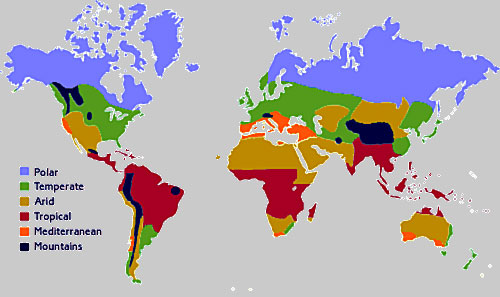
Designed by Ware Welch Web Design
Hosted by Ware Welch Web Hosting
Copyright © 2007-2025 Ware Welch Web Design;
All Rights Reserved
Hosted by Ware Welch Web Hosting
Copyright © 2007-2025 Ware Welch Web Design;
All Rights Reserved
Huge range of good value reptile produts at: Blue Lizard Reptiles
Want a break? Visit: www.holidaybookr.com the holiday comparison site!
Looking for products? Visit: www.whats-in-stock.com the product locator website!
or Visit: www.who-stocks.com for some great deals.
Want a break? Visit: www.holidaybookr.com the holiday comparison site!
Looking for products? Visit: www.whats-in-stock.com the product locator website!
or Visit: www.who-stocks.com for some great deals.






Due to the UK's climate it is unsuitable for most tortoises and turtles and so these species will need special provision to enable them to survive in this country.
This page briefly describes some of the regions which tortoises can naturally be found in to enable better understanding of your pets needs.
This page briefly describes some of the regions which tortoises can naturally be found in to enable better understanding of your pets needs.


The UK has a very limited selection of native reptile (three lizard species and three snake species) when compared to many countries and even to mainland Europe and has no native species of tortoises, turtles and terrapins. This could partially be due to being an island, but the main reason for this is the climate. In Britain, and especially in more northern areas, the tendancy towards short cool summers, long cold winters, and high levels of rainfall, makes Britain an unsuitable climate for most reptiles and especially tortoises (which mostly come from tropical or arid regions).
This page describes some of the regions in which tortoises and turtles can naturally be found in the wild to provide a clearer understanding of the natural environment in which they live and therefore cast light on their needs in captivity.
Most tortoises and turtles come from three types of general habitat: arid, tropical, or Mediterranean. There are a few species (such as Horsefield's tortoise and some box turtles) which can be found in temperate or mountainous regions. The map below shows the general distribution of climatic zones around the world.
Tropical forests are found near the equator in Central America, parts of Africa and Asia. They are very hot and humid and contain a large variety of plants and animals - around half of all the world's species. An example of a tortoise which lives in this sort of habitat is the redfooted tortoise.
Temperate deciduous forests contain trees that lose their leaves in winter and are found across Europe and USA. Winters are relatively mild and summers relatively cool. Some species such as box turtles can be found in this sort of habitat.
Coniferous forests contain pine trees are found in a belt further north than deciduous forests, which stretches across Scandinavia, Russia and Canada.
Desert is the driest of areas. The largest expanse of desert is the Sahara found in North Africa. Areas of scrubland (called desert scrub) border the desert and these are home to species such as the African Spurred tortoise.
Savannah or tropical grasslands are hot and dry, dominated by grass, scrub and occasional trees. They have two distinct seasons - a dry season when much of the vegetation dies back, and a rainy season when it grows rapidly. Savannah are found in central Africa, northern Australia and central South America. An example of a tortoise which lives in this climate is the Leopard tortoise of Africa.
Temperate grasslands are areas dominated by grass, where trees and large bushes are scarce. The weather is less harsh than the savannah with winters which are relatively mild and summers which are relatively cool.. Famous temperate grasslands include the Puszta in Hungary, Veldts in South Africa, Pampas in Argentina and Prairies in USA.
Mediterranean is a pleasant climate - not too hot or cold. As the name suggests it is found around the Mediterranean Sea and to a lesser extent elsewhere. This is where the Mediterranean tortoise species originate from.
Tundra surrounds the poles. It has an extremely cold climate, with limited numbers of plants and animals.
Mountain areas can be very cold at night and during winter. The growing season is short and at higher levels trees will not grow.
This page describes some of the regions in which tortoises and turtles can naturally be found in the wild to provide a clearer understanding of the natural environment in which they live and therefore cast light on their needs in captivity.
Most tortoises and turtles come from three types of general habitat: arid, tropical, or Mediterranean. There are a few species (such as Horsefield's tortoise and some box turtles) which can be found in temperate or mountainous regions. The map below shows the general distribution of climatic zones around the world.

Tropical forests are found near the equator in Central America, parts of Africa and Asia. They are very hot and humid and contain a large variety of plants and animals - around half of all the world's species. An example of a tortoise which lives in this sort of habitat is the redfooted tortoise.
Temperate deciduous forests contain trees that lose their leaves in winter and are found across Europe and USA. Winters are relatively mild and summers relatively cool. Some species such as box turtles can be found in this sort of habitat.
Coniferous forests contain pine trees are found in a belt further north than deciduous forests, which stretches across Scandinavia, Russia and Canada.
Desert is the driest of areas. The largest expanse of desert is the Sahara found in North Africa. Areas of scrubland (called desert scrub) border the desert and these are home to species such as the African Spurred tortoise.
Savannah or tropical grasslands are hot and dry, dominated by grass, scrub and occasional trees. They have two distinct seasons - a dry season when much of the vegetation dies back, and a rainy season when it grows rapidly. Savannah are found in central Africa, northern Australia and central South America. An example of a tortoise which lives in this climate is the Leopard tortoise of Africa.
Temperate grasslands are areas dominated by grass, where trees and large bushes are scarce. The weather is less harsh than the savannah with winters which are relatively mild and summers which are relatively cool.. Famous temperate grasslands include the Puszta in Hungary, Veldts in South Africa, Pampas in Argentina and Prairies in USA.
Mediterranean is a pleasant climate - not too hot or cold. As the name suggests it is found around the Mediterranean Sea and to a lesser extent elsewhere. This is where the Mediterranean tortoise species originate from.
Tundra surrounds the poles. It has an extremely cold climate, with limited numbers of plants and animals.
Mountain areas can be very cold at night and during winter. The growing season is short and at higher levels trees will not grow.

